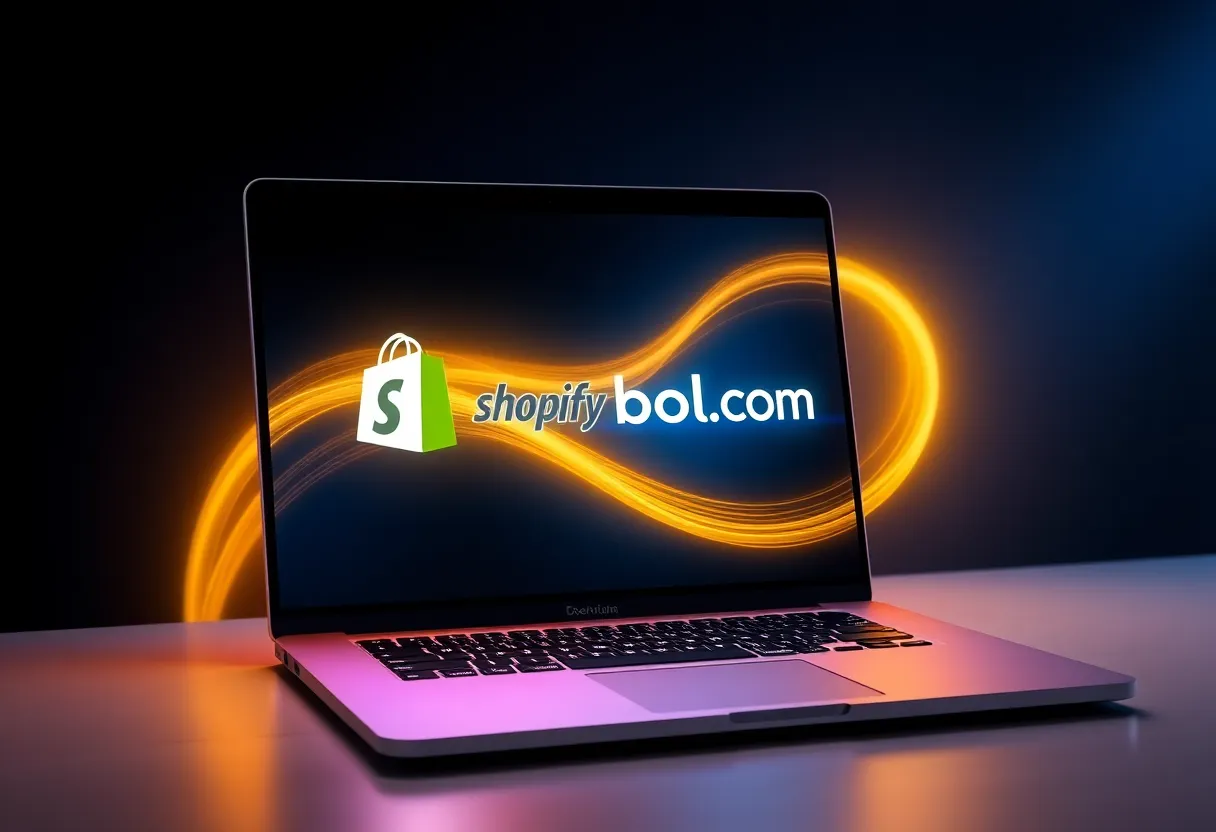Table of Contents
The E-commerce Landscape in Benelux
Did you know that over 70% of Dutch consumers shop online at least once a month? The e-commerce scene in the Benelux region is booming, with the Netherlands and Belgium leading the charge. At the heart of this digital marketplace sits Bol.com, often called the “Amazon of the Netherlands”.
Bol.com has become a household name, capturing a significant share of online sales in both countries. Here’s a quick look at why it’s so popular:
- Vast product selection
- Fast delivery options
- User-friendly platform
- Strong customer trust
Meanwhile, Shopify has been gaining traction among Benelux merchants who want to create their own online stores. Let’s compare some key features:
| Feature | Bol.com | Shopify |
|---|---|---|
| Customization | Limited | Extensive |
| Brand Control | Shared | Full |
| Customer Data | Restricted | Complete Access |
For sellers looking to maximize their reach, connecting Shopify to Bol.com can be a game-changer. It combines the power of your own branded store with the massive audience of Bol.com. This is where tools like Marketplace Connect come in handy, making it easy to manage both channels.
But how exactly do you start selling on Bol.com? This video breaks it down:
As online shopping continues to grow in the Benelux region, sellers who can effectively manage multiple channels are poised for success. By understanding the unique strengths of platforms like Shopify and Bol.com, you can create a strategy that leverages both to boost your sales and reach more customers.
Setting Up Your Shopify-Bol.com Integration
Getting your Shopify store connected to Bol.com opens up a whole new market. But how do you actually do it? Let’s break it down step-by-step.
First things first, you’ll need a Bol.com seller account. Head over to their website and sign up. Once that’s done, it’s time to find an integration app. There are a few options out there, but we’ve had good results with Marketplace Connect. It’s pretty straightforward to set up and doesn’t break the bank.
- Create your Bol.com seller account
- Choose and install an integration app
- Configure your settings
- Sync your products
Once you’ve got the app installed, you’ll need to connect your Shopify and Bol.com accounts. This usually involves entering some API keys or authorizing the connection. After that, you can start syncing your products.
Optimizing Your Product Listings for Bol.com
Now that you’re connected, it’s time to make sure your products shine on Bol.com. This platform has its own quirks, so you’ll want to tweak your listings a bit.
Here’s what you need to focus on:
- Titles: Keep them clear and include key details
- Descriptions: Highlight benefits and use Bol.com’s formatting
- Categories: Choose the right ones to help buyers find you
- Attributes: Fill out as many as possible
- Pricing: Research competitors and adjust accordingly
Remember, Bol.com shoppers might be looking for different things than your Shopify customers. Take some time to browse similar products on Bol.com and see what works.
- Use Dutch language if possible
- Include EAN codes for all products
- Add high-quality images from multiple angles
Managing Orders and Inventory Across Platforms
One of the trickiest parts of selling on multiple channels is keeping everything in sync. You don’t want to oversell and disappoint customers, or miss out on sales because your inventory isn’t up to date.
This is where a good integration tool really shines. Marketplace Connect, for example, handles order syncing and inventory updates automatically. Here’s a quick look at how it compares to manual management:
| Task | Manual | With Integration |
|---|---|---|
| Order Processing | 15-30 min per order | Instant |
| Inventory Updates | Daily manual check | Real-time sync |
| Error Rate | 5-10% | <1% |
Automating these processes frees up a ton of time. Instead of copying orders and updating spreadsheets, you can focus on growing your business.
Here’s a quick video that dives deeper into building a solid sales channel strategy:
Handling returns and customer service across platforms can be a challenge. It’s important to have a clear system in place. Some sellers use separate email addresses for each platform to keep things organized. Others rely on their integration tool to centralize everything.
No matter which approach you choose, the key is consistency. Make sure your team knows how to handle issues from each platform. And don’t forget to keep an eye on your Bol.com seller metrics – they can impact your visibility on the platform.
By setting up a smooth integration between Shopify and Bol.com, you’re opening up your products to a whole new market. It takes some work upfront, but the potential payoff is huge. Just remember to keep an eye on your listings, stay on top of inventory, and provide great customer service across both platforms. With the right tools and approach, you’ll be well on your way to boosting your sales.
Maximizing Your Success on Bol.com
Bol.com’s massive reach in the Benelux region offers Shopify sellers a golden opportunity to expand their customer base. But success on this platform requires more than just listing your products and hoping for the best. Let’s dive into some key strategies to boost your Bol.com performance.
Promotional tools are your secret weapon
Bol.com offers several promotional tools that savvy sellers can leverage:
- Flash deals
- Seasonal promotions
- Bundle offers
- Sponsored product placements
Using these tools strategically can significantly increase your visibility and sales. For example, participating in Bol.com’s “Deal of the Day” can lead to a surge in orders and introduce your brand to new customers.
Data-driven optimization is crucial
Regularly analyzing your sales data on Bol.com can uncover valuable insights:
- Identify your best-selling products
- Spot seasonal trends
- Understand which pricing strategies work best
- Recognize underperforming listings that need improvement
By making data-informed decisions, you can continually refine your Bol.com strategy. This might involve adjusting prices, improving product descriptions, or focusing your inventory on high-demand items.
Building a stellar reputation pays off
On Bol.com, your seller reputation can make or break your success. Here’s how to build and maintain a strong reputation:
- Respond promptly to customer inquiries
- Ship orders quickly and accurately
- Provide detailed and honest product descriptions
- Encourage satisfied customers to leave reviews
A solid reputation not only leads to more sales but can also improve your search rankings on Bol.com. This virtuous cycle can significantly boost your overall performance on the platform.
Managing all these aspects across multiple sales channels can be challenging. That’s where tools like Marketplace Connect come in handy, streamlining the process of syncing orders and inventory between Shopify and Bol.com. This allows you to focus on implementing these strategies without getting bogged down in manual updates.
Wrap-up
Connecting Shopify to Bol.com opens up a world of opportunities for e-commerce businesses looking to expand their reach. By tapping into the Benelux market, you’re not just adding another sales channel – you’re potentially doubling your customer base.
Remember, success in multi-channel selling comes down to efficient management. Keeping your inventory synced and orders organized across platforms is key. That’s where tools like Marketplace Connect come in handy, automating these processes so you can focus on growing your business.
As you move forward, consider how you’ll adapt your product listings and marketing strategies for the Dutch and Belgian markets. It might take some tweaking, but the potential payoff is huge. And who knows? Bol.com might just be your first step into the broader European e-commerce scene.
Ready to take your Shopify store to the next level? The FAQ section below covers some common questions about getting started with Bol.com integration. Let’s dive in and see how you can make the most of this powerful partnership.
Common Questions About Shopify-Bol.com Integration
What are the costs of selling on Bol.com?
Selling on Bol.com involves a few different fees. There’s a monthly subscription fee, which varies based on your plan. You’ll also pay a commission on each sale, typically ranging from 5% to 17% depending on the product category. Some categories may have additional fees. It’s important to factor these costs into your pricing strategy.
How is currency conversion handled?
Bol.com operates in euros, so if your Shopify store uses a different currency, you’ll need to handle conversion. Many integration tools, including our Marketplace Connect app, can automatically convert prices. They use real-time exchange rates to ensure your listings are always accurate. This saves you time and prevents pricing errors.
What are my shipping options for Bol.com orders?
You have two main options for shipping Bol.com orders:
- Ship items yourself directly to customers
- Use Bol.com’s fulfillment service, where they store and ship your products
Both options can be managed through integration tools. Our app, for example, syncs order details and tracking information automatically, streamlining your shipping process regardless of the method you choose.
Who handles customer support for Bol.com sales?
As the seller, you’re responsible for customer support on Bol.com orders. This includes answering questions, handling returns, and resolving issues. Good integration tools can help by centralizing customer communications and order details. This makes it easier to provide quick, accurate support across all your sales channels.
How can I manage inventory across Shopify and Bol.com?
Keeping inventory in sync is crucial when selling on multiple platforms. Integration apps like Marketplace Connect automatically update your stock levels across Shopify and Bol.com in real-time. This prevents overselling and ensures customers see accurate availability. It’s a hands-off way to manage inventory, letting you focus on growing your business.
Is there a way to automate the integration process?
Yes, automation is key to efficient multi-channel selling. Tools like our Marketplace Connect app can automate most aspects of Shopify-Bol.com integration. This includes syncing products, orders, inventory, and more. By reducing manual work, you can scale your business more easily and focus on strategy rather than day-to-day operations.





